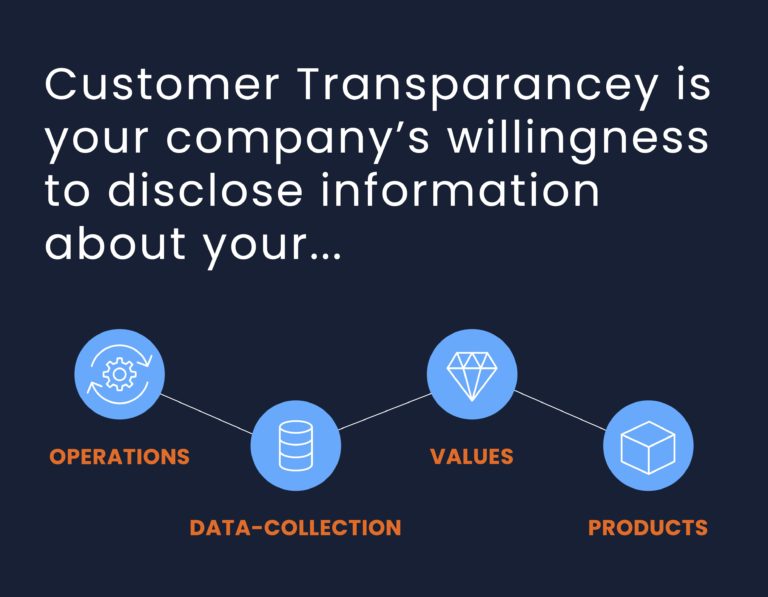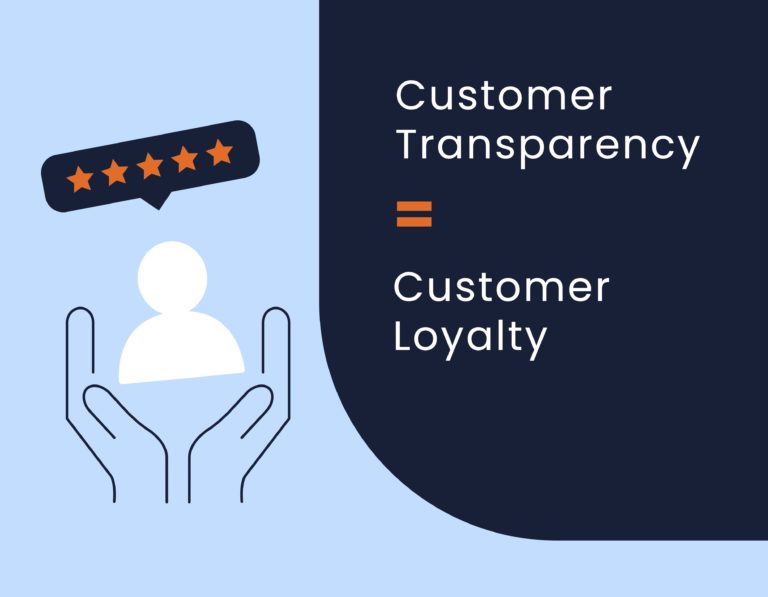Paying customers don’t like being lied to. You already know that. However, now more than ever, not only do your customers not want to be lied to, but they want to see that they’re supporting businesses that uphold their same values. In essence, they demand that you give them a look into how you operate. Thus, “customer transparency” is shaping how organizations should build trust and enable long-term customer loyalty.
In a recent “QuickTake Podcast,” Modern Distribution Management‘s Tom Gale summed up how we should look at 2023. Three years after the start of the COVID-19 pandemic, a lot has changed in the usual business cycle. Mix in assumptions of a substantial economic downturn, and you get 2023. Gale sums up the year with paraphrased comments by Warren Buffett and says that “seeing who is swimming naked when the tide goes out nails [2023] on several angles.
For Gale, this year will be characterized by transparency in the shape of a forced revelation of which companies kept their swim trunks and which were swept out to sea. In other words, 2023 will inevitably reveal whom the economic uncertainty will claim as its victims.
Moreover, a different form of transparency that should be acknowledged is customer transparency. And better yet, customer transparency will help you mitigate the effects of a slow economy so your business won’t be stuck treading water when the current recedes.
What is Customer Transparency?
Customer transparency is your company’s willingness to disclose information about your operations, data collection, values, or products so that your customers can validate your priorities as a business.

At White Cup, we have previously emphasized the importance of personalizing customer interactions and using targeted messaging. One consideration for that messaging is how you should provide insights into your business, looping in your customers along the way. That’s where customer transparency comes into play.
Again, as customers, we expect a certain level of honesty with every interaction we have with a business. Black boxes and blind trust just don’t cut it nowadays.
Why Does Customer Transparency Matter?
In today’s digital age, customers can easily shop around and decide to shop with your competitor with the drop of a hat. That means trust is among your most powerful commodities. It’s a straight line from trust to customer satisfaction to customer loyalty.
In fact, according to Zendesk’s 2021 Customer Experience Trends Report, 75% of consumers will spend more to buy from a business they believe truly values them. In the report, to “value” a customer means the business demonstrates reasonable pricing, considerate communication, and data security. So, showing your customers that you value them does not equate to dropping in with a box of donuts or other gifts every once in a while.
Customer transparency matters because it shows that you’re not trying to trick your customer into overpaying, drawing out your sales process, or trying to take advantage of their business. Operating transparently can affect attitudes toward your brand. So, when you do all of those things, you can expect to develop trust and customer loyalty.

How Does Customer Transparency Increase Customer Loyalty?
Customer transparency increases customer loyalty by demonstrating that doing business with your company is a partnership, not a single transaction. The benefits of doing this are critical and will lead to the long-term success of your business.
Benefits of Customer Transparency:
- Efficiency: Ultimately, customer transparency requires a cultural shift within your business. As you start implementing initiatives to be more transparent with your customers, you will find that it’s only possible when you’re communicating well between staff and customers. As a result, strong communication will lead to more efficient operations internally and externally.
- Brand reputation: Efficiency will naturally lead the way toward developing a good reputation with your customers and potential customers. Every distributor should strive to be the business that customers prefer working with. Because, at the end of the day, people buy from people.
- More sales: Unsurprisingly, improved efficiency and a strong reputation will inevitably lead to more sales. On the one hand, increasing customer satisfaction and loyalty will lead to repeat customers you can count on in the long term. And on the other hand, a strong reputation means that potential customers are more likely to start a relationship with your distributorship.
With all of these benefits in mind, it’s time to act and become an organization that prioritizes customer transparency. Fortunately, this is not as difficult as it may seem.

How to be More Transparent with Customers
You can implement simple changes to see immediate, significant changes to your customer transparency.
Lay the groundwork internally
You can’t be transparent with your customers if you’re not transparent with your colleagues. This should be a top-down initiative. Inspiring honesty within your business should start with leadership relaying the business’s health, roadmaps for what’s ahead, and explaining how operations…operate. Implementing CRM and Business Intelligence (BI) technology can help with this. CRM helps drive customer transparency by storing interactions between employees and customers. Meanwhile, BI helps identify customer trends that employees can use to understand better and provide more value to customers.

Clear billing
At White Cup, we understand better than anyone that pricing is tricky and is an art and a science. Intelligent pricing does not mean you must hide your process for landing on a final price. In fact, intelligent pricing should mean that it’s easier than ever to know exactly why your prices are the way they are.
Keep your word
Once again, customers don’t like to be tricked. The happiness of your customers is tightly tied to delivering on your promises to your customer. So, if you’re not going to deliver on a specific deadline or service, you need to communicate precisely why and own up to your missteps.
Build partnerships
Doing business with you should be balanced. If it feels like it is, you may need to take a step back and consider why your customers aren’t disclosing their displeasure. Often, it’s because you haven’t laid the groundwork to demonstrate that you’re honest and want to operate transparently. Remedy this by asking about their challenges and offering your industry expertise. Help your customers make better business decisions, which will pay dividends in their relationship with your company.
Be responsive
Your goal should always be to answer customer inquiries as soon as possible. Additionally, you should ensure that you have automated workflows set up to not miss incoming leads and have a fast response rate. This study examining productivity gains in a post-COVID-19 era found that customers who contact a business by phone or email expect a response within an hour.
These changes help establish a customer transparency culture and position your business for success. By being more honest with your customers, you can increase customer retention rates and make them more than repeat customers; you can make them advocates.
Customer Transparency is Good for Customers and Good for Business
Modern companies worldwide are realizing how customer transparency is reshaping their businesses. White Cup offers technology that allows you to worry less about analyzing data and more time taking data-driven action to grow your business. Chief among those actions should be bolstering relationships with customers that will lock them in as loyal customers and building your reputation with potential customers. Because what’s good for your customers will ultimately be good for your business.
Related Posts
-
Caleb Grothaus is the new Director of Business Development, and Dave Wall has been promoted…
-
Net Results Group Managing Partner Lance Gilbert discusses the state of indirect spend at large…
-
Amazon Business's second annual Procurement Report shed some light on the state of the distribution…






